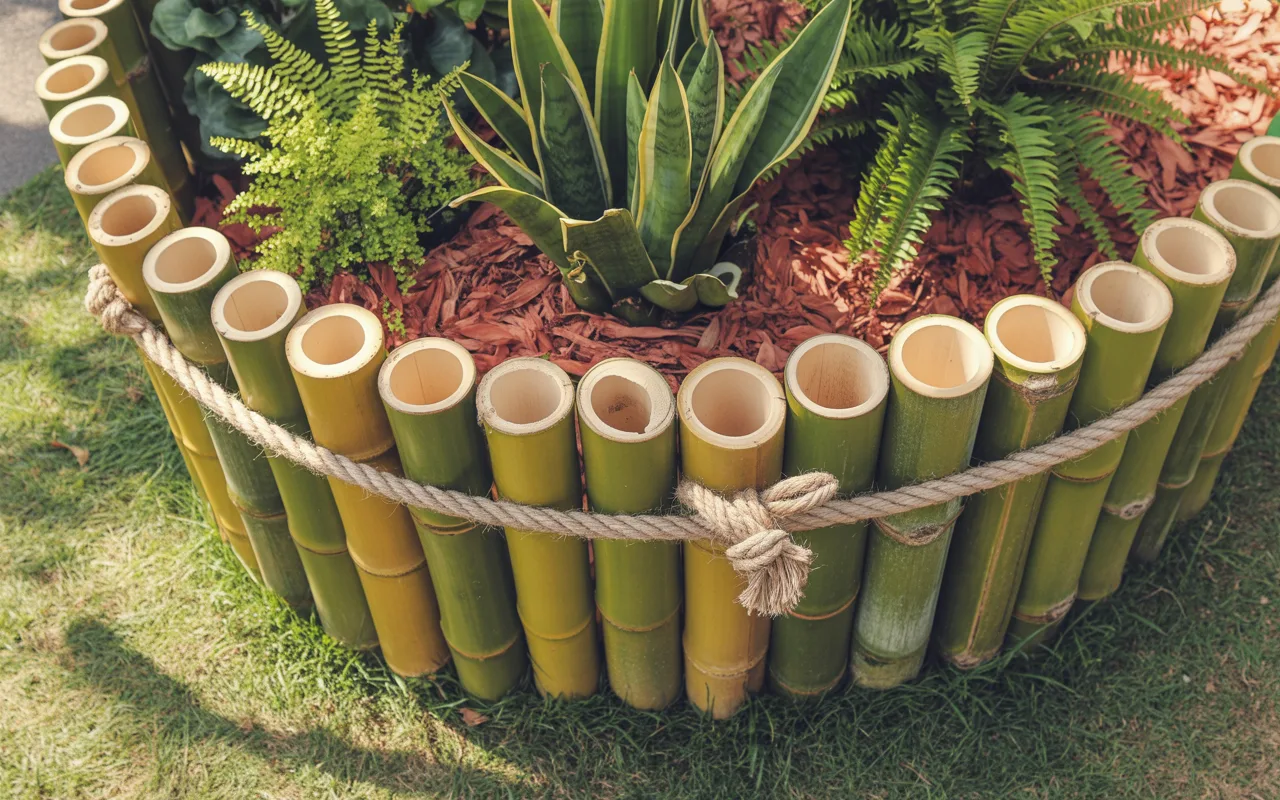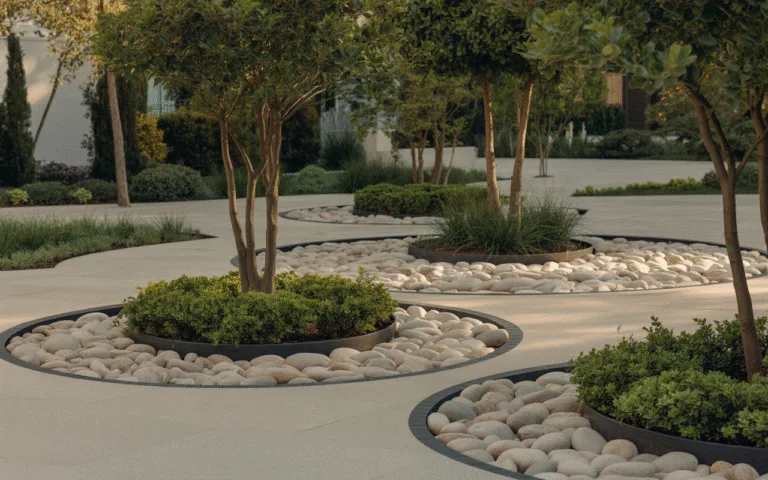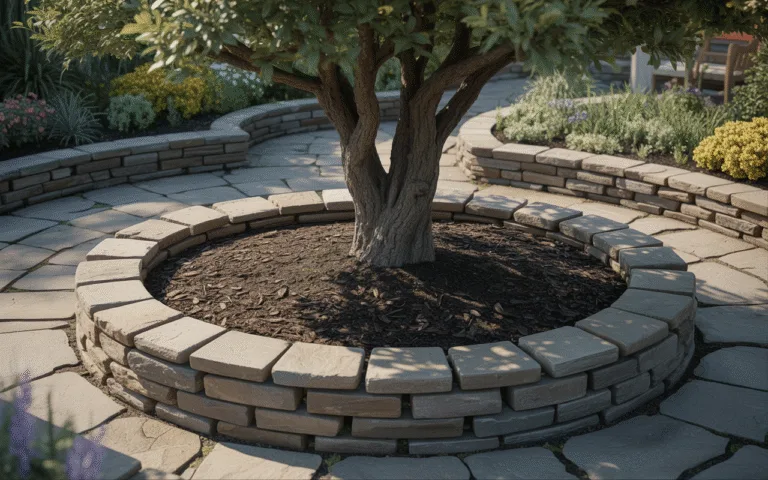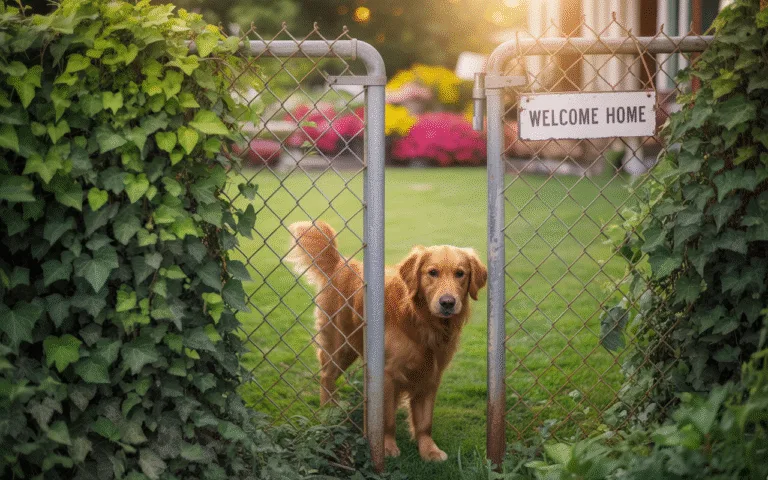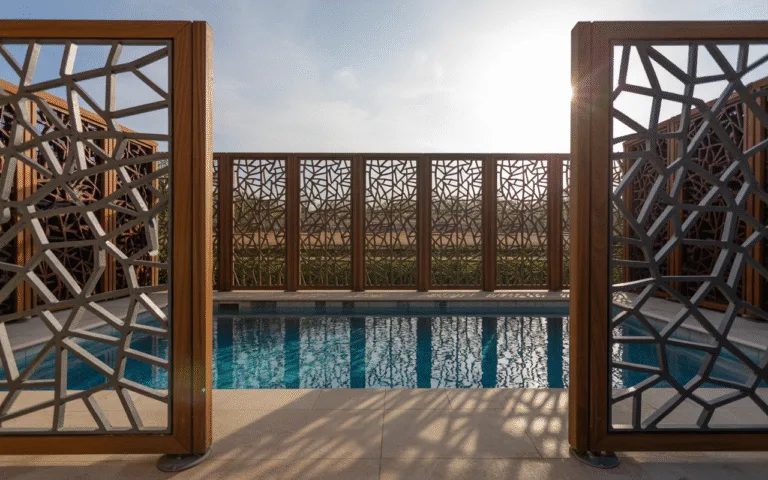18 Lawn Border Ideas That’ll Instantly Upgrade Your Yard
Why Lawn Borders Matter (More Than You Think)
Okay, real talk—lawn borders are totally underrated.
They don’t just look good (though, they definitely do), but they also keep everything tidy and defined.
I used to let my flowerbeds spill into the grass, and my lawn looked like it was going through an identity crisis. Once I added a proper border? Game-changer.
A good lawn border can:
- Create visual separation between lawn, garden beds, or pathways
- Prevent grass from creeping into flowerbeds
- Make mowing and trimming easier
- Give your yard that polished, cared-for vibe
So whether you’re a weekend gardener or a “green thumb in training,” these ideas are totally doable, budget-friendly, and honestly kinda fun to put together.
1. Brick Edging
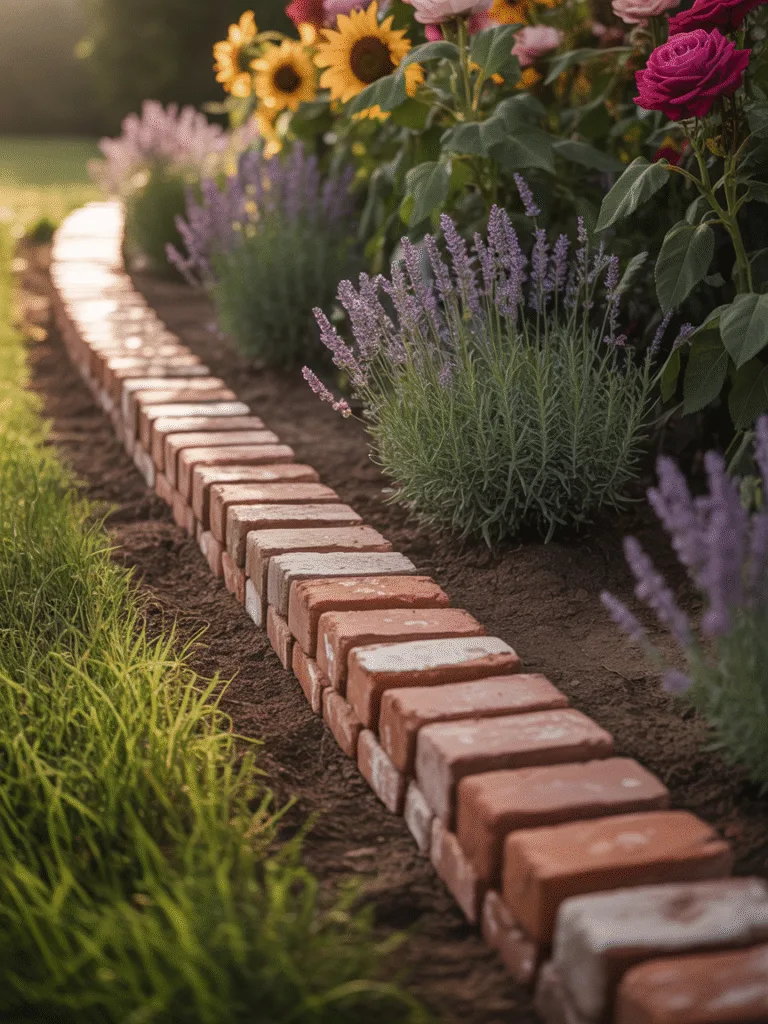
Brick edging is one of my favorites because it’s durable, classic, and honestly…kinda satisfying to install.
Here’s why you’ll love it:
- It gives your lawn that neat, formal look
- Easy to mow against once it’s flush with the ground
- You can go traditional red, or experiment with different finishes
Design Tips:
- Lay bricks flat for a cleaner edge
- Try a diagonal pattern for extra visual interest
- Add gravel beneath for stability
Pro Tip: Use a rubber mallet and some sand to level everything out as you go. It’s basically adult LEGOs!
2. Metal Landscape Edging

Want something sleek and minimalist? Metal edging is your best friend. I personally love using rusted corten steel for that modern farmhouse vibe.
Perks:
- Super durable — doesn’t warp or crack
- Great for sharp curves and clean lines
- Perfect for modern or contemporary yards
What to Know:
- Comes in aluminum, steel, or corten
- Can be powder-coated for different finishes
- Installs with stakes hammered into the soil
Design Idea: Use it around gravel paths or succulent gardens for an industrial-chic look.
3. Wood Borders
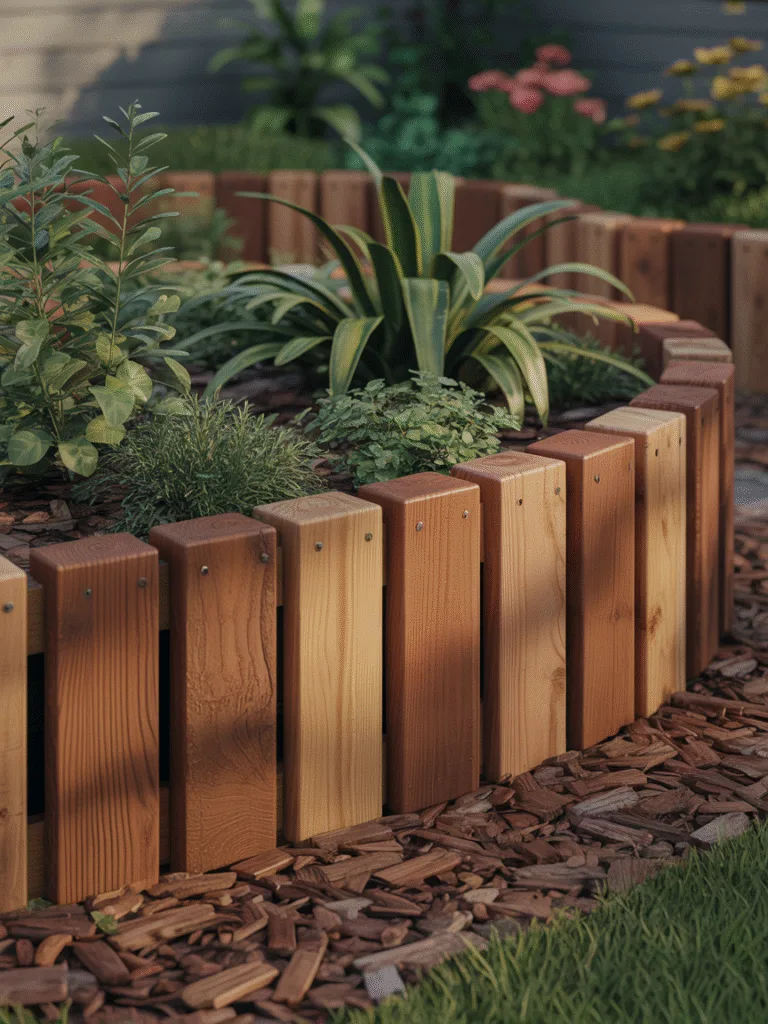
This one’s all about warmth. I used salvaged cedar planks once and it looked amazing. Wood borders add rustic charm and are super customizable.
Benefits:
- Budget-friendly if you repurpose wood
- Easy to cut and shape
- Blends beautifully with natural settings
Options to Try:
- Reclaimed timber or railroad ties
- Vertical wood stakes (picket-style)
- Horizontal log edging
Pro Tip: Use treated wood or seal it yourself to prevent rotting. Cedar and redwood are naturally weather-resistant!
4. Stone Garden Edging
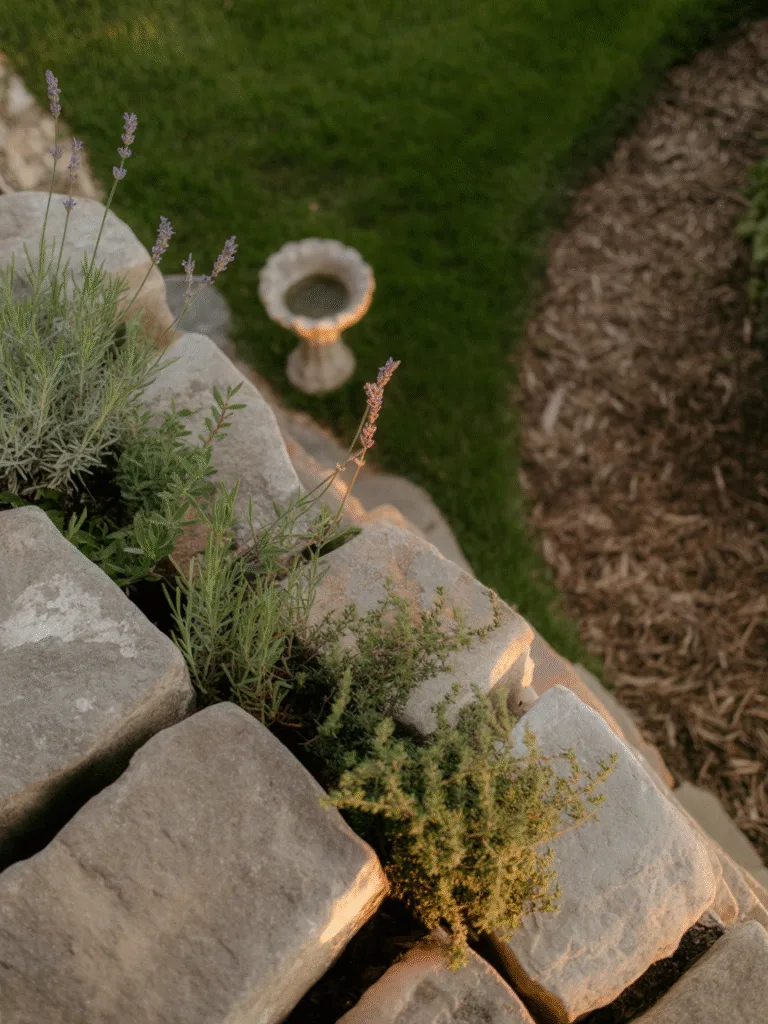
You can’t go wrong with stone. It’s got that old-world, cottage-core charm that feels straight out of a garden fairytale.
Why it rocks (pun intended):
- Naturally beautiful and unique
- Withstands weather like a champ
- Works for formal and wild gardens
Stone Options:
- Flagstone or slate for a flat edge
- River rock for a more natural flow
- Cobblestones for structure and strength
Quick Tip: Combine with groundcover plants like creeping thyme for that magical, overgrown look.
5. Plastic or Rubber Edging
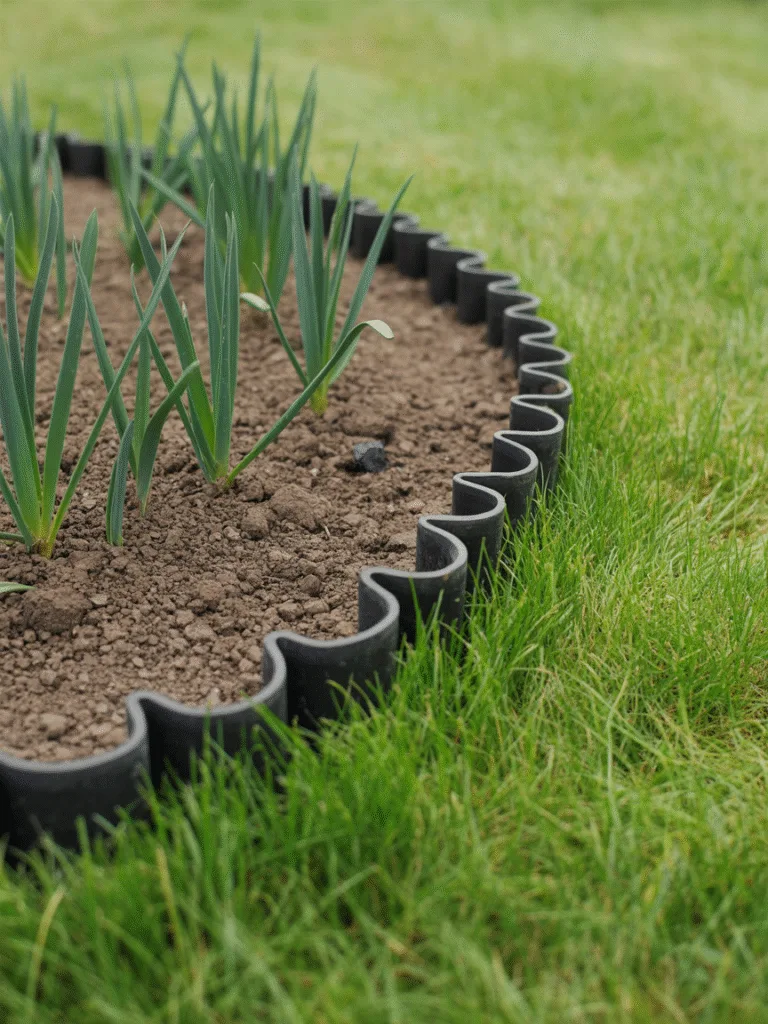
Okay, I know what you’re thinking… but hear me out. Today’s plastic or recycled rubber edging looks way better than you might expect.
Pros:
- Super affordable and flexible
- Great for curves or DIY projects
- Weather-resistant and low-maintenance
Installation Tips:
- Dig a trench and anchor it with stakes
- Cover the top edge with mulch or soil for a cleaner look
- Use longer pieces to avoid too many joins
My Take: I used rubber edging from old tires around my veggie patch — tough as nails and totally guilt-free!
6. Concrete Borders
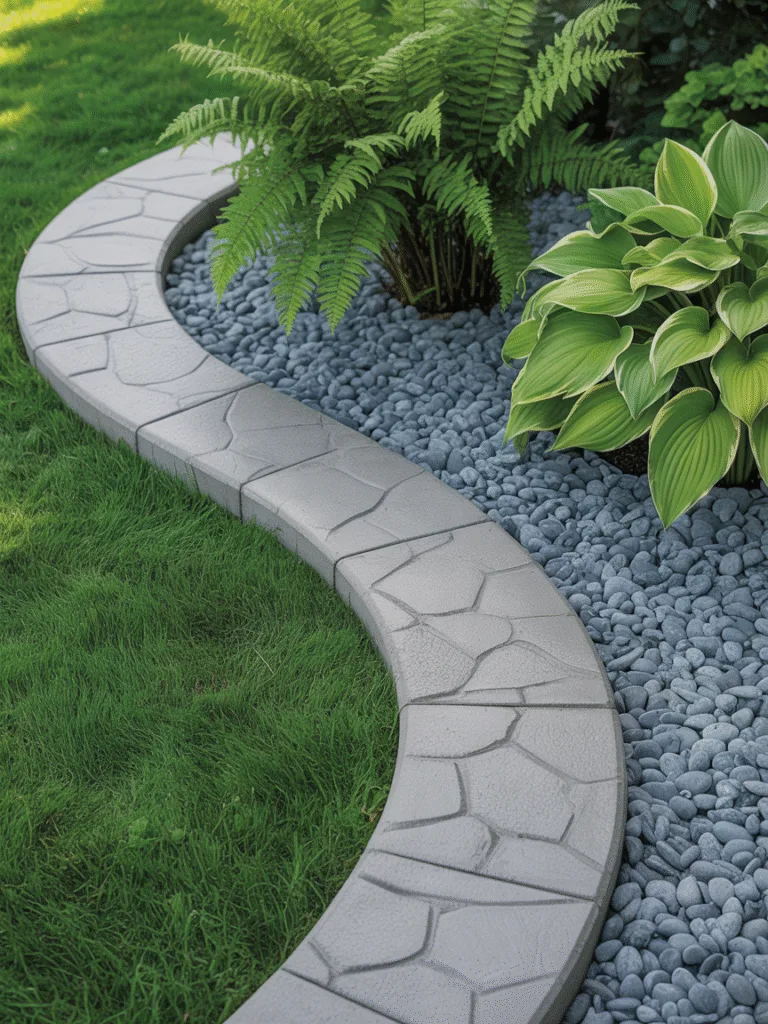
If you want something permanent, low-maintenance, and a little extra, concrete is a beast. You can pour it yourself or use pre-formed blocks.
Here’s what makes it awesome:
- Long-lasting and doesn’t budge
- Can be molded into curves or straight lines
- You can even color or stamp it for a custom look
Design Tips:
- Add pebbles or mosaic tiles while it sets
- Use forms to create wave-like patterns
- Pair with gravel or mulch paths for contrast
Heads Up: It’s a bit more work up front, but totally worth it if you want something super solid.
7. Living Edges (Plants as Borders!)
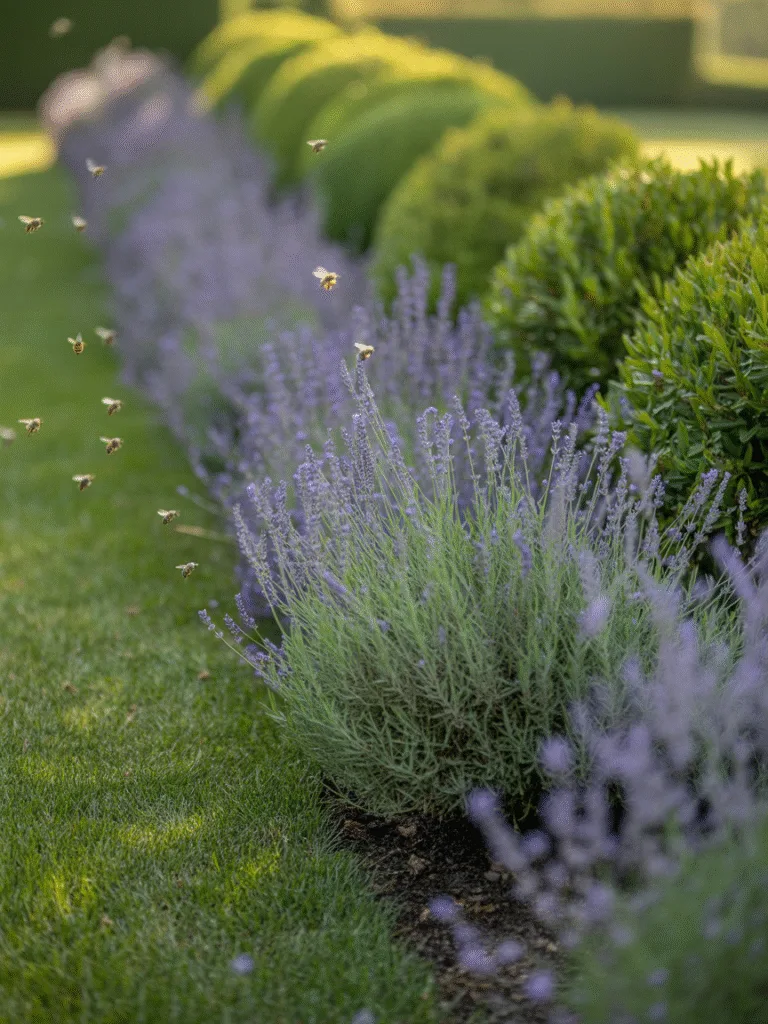
This one’s for the plant lovers! Using plants as natural borders brings texture, color, and life to your lawn edges.
Why it’s awesome:
- Softens hard lines of your garden
- Attracts bees, butterflies, and happy vibes
- Endless plant options to match your style
Great Border Plants:
- Lavender or rosemary (fragrant & lush)
- Boxwood or dwarf shrubs (neat and structured)
- Creeping Jenny or sedum (low and trailing)
My Fave Combo: Lavender + rocks = dreamy Mediterranean feel!
8. Gravel Trenches

I swear by this one for driveways and patios. A gravel trench border is super clean-looking and doubles as a drainage solution.
Why You’ll Love It:
- Keeps grass from sneaking into walkways
- Improves drainage in soggy areas
- Looks modern and tidy
Quick How-To:
- Dig a shallow trench (2–3 inches)
- Line with landscape fabric
- Fill with gravel (pea gravel works great)
Pro Styling Tip: Choose dark gravel to contrast with green grass, or light stone for that beachy, clean look.
9. Terracotta Tiles or Pots
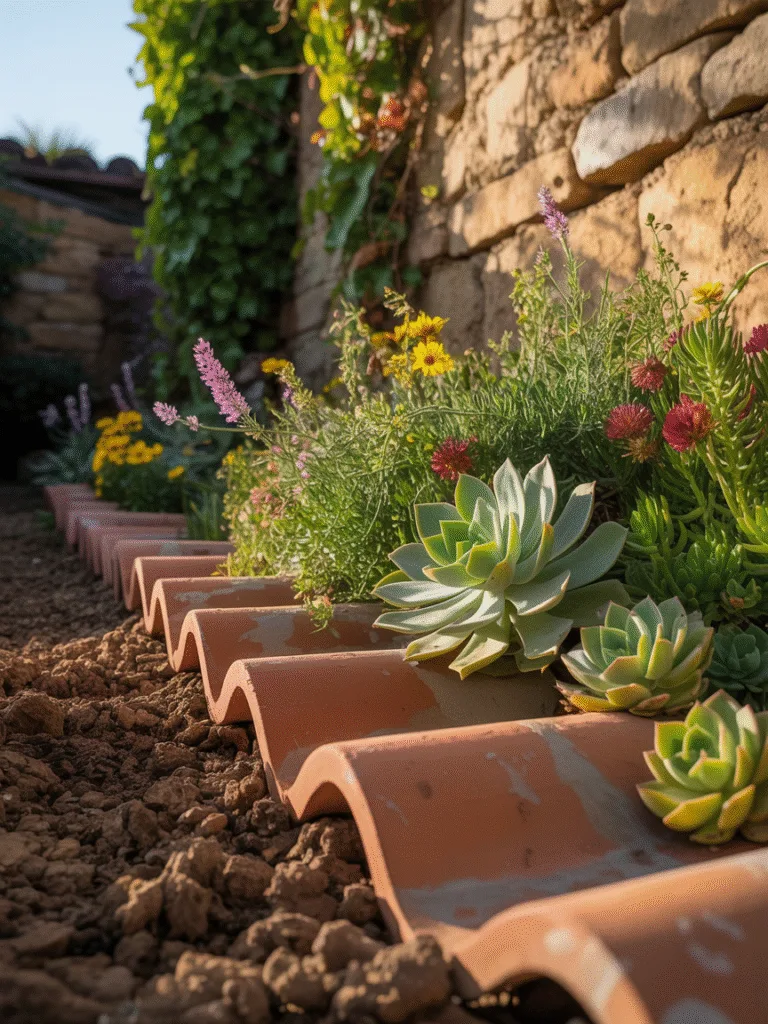
Want something quirky and a little Mediterranean? Try half-buried terracotta tiles or pots as edging!
Why it works:
- Unique and artistic
- Great for themed gardens (Tuscan, desert, or cottage styles)
- Reuse broken tiles or pots for a budget-friendly edge
Style Ideas:
- Alternate between whole and broken pots
- Create a wave or zig-zag pattern
- Combine with mulch or succulents
Pro Tip: Glaze them or paint with weather-resistant paint for pops of color.
10. Recycled Materials (DIY Style)

Let’s get creative! You can edge your lawn with almost anything if you think outside the box. I once used old wine bottles for a border (yep, true story).
Cool DIY Ideas:
- Glass bottles (neck-down for safety)
- Old plates or tiles stuck vertically
- Pallet wood for rustic chic
Why It’s Worth Trying:
- Eco-friendly and super personal
- Guaranteed conversation starter
- Fun weekend project
My Advice: Stick to a theme or color scheme so it looks intentional, not chaotic.
11. Gabion Basket Borders
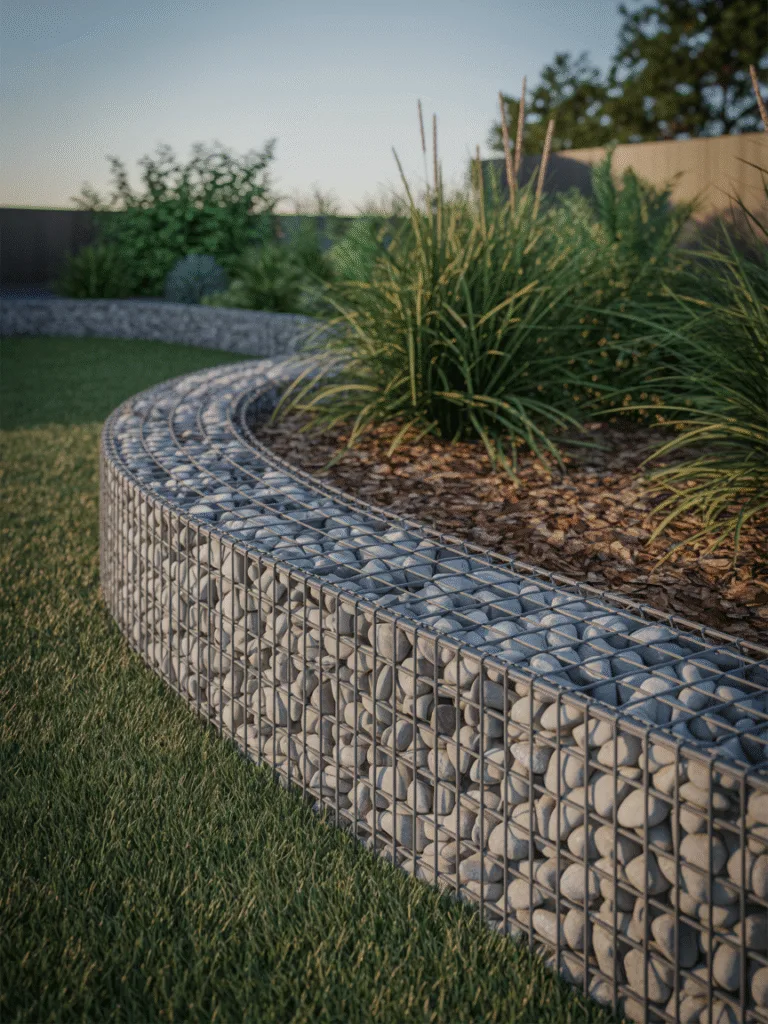
If you want something bold and industrial, gabion baskets filled with rocks are an edgy, modern way to border your lawn.
Why it’s cool:
- Strong and long-lasting
- Adds height and texture
- Ideal for slope retention or statement edges
How to Use:
- Fill steel mesh cages with river rock or granite
- Place them around patios or raised beds
- Add LED lights inside for nighttime drama
Design Tip: Stick with uniform rock sizes for a sleek, clean finish.
12. Bamboo Edging
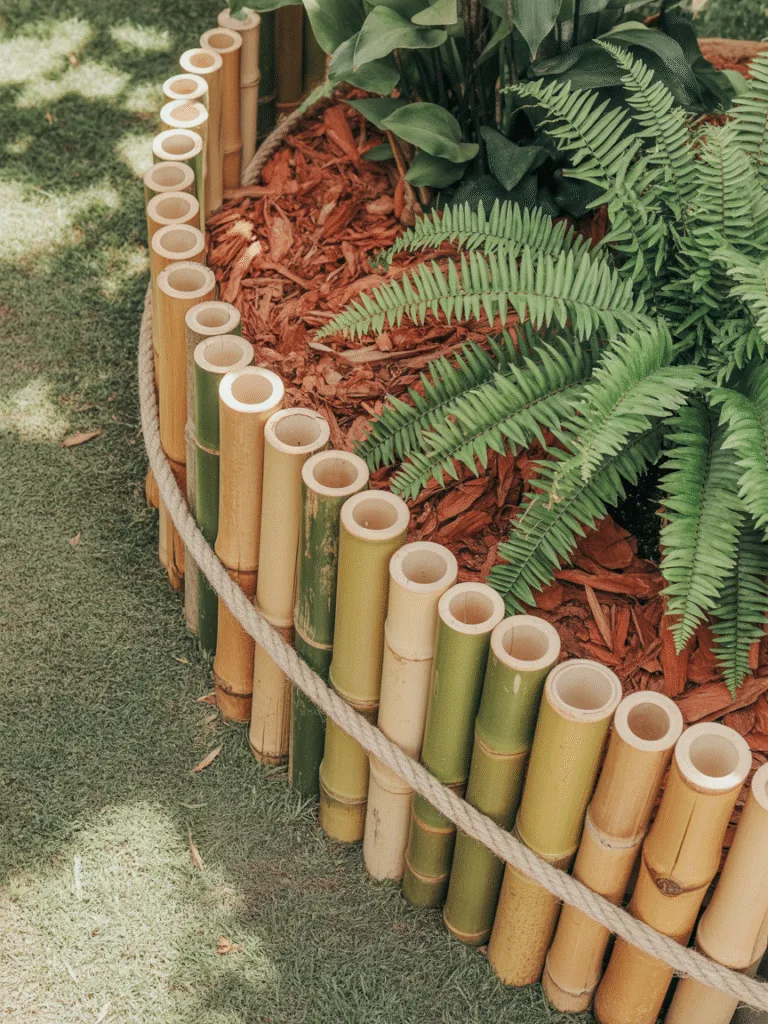
Bamboo is natural, flexible, and eco-friendly, making it a fab pick for tropical or Asian-inspired gardens.
Perks:
- Lightweight and biodegradable
- Easy to install with garden staples or stakes
- Offers a soft, relaxed look
Tips to Try:
- Use short bamboo rolls for low borders
- Combine with pebbles or mulch for contrast
- Seal to extend its outdoor life
Bonus: The hollow canes make a satisfying clink when tapped. Seriously.
13. Moss-Covered Edging Stones

Want a whimsical, forest-like feel? Moss-covered stones are it. They bring softness, history, and a fairy-tale quality.
What I Love:
- Softens hard landscaping
- Low-maintenance and naturally cool
- Great for shaded, damp spots
To Create:
- Use flagstones or cobblestones in shaded areas
- Add moss spores or transplant moss
- Mist regularly until it takes root
Pro Tip: Pair with ferns or hostas for the full enchanted forest effect.
14. Shell or Coral Borders

Coastal lovers, this one’s for you! Crushed shells or coral create a breezy, beachy lawn edge.
Why It’s Unique:
- Bright, white tone contrasts beautifully with green grass
- Adds a crunchy texture and interesting detail
- Perfect for seaside homes or nautical themes
What to Use:
- Crushed oyster or clam shells
- Coral rubble (ethically sourced, of course)
- White pebbles for a cleaner version
Heads-Up: Avoid heavy foot traffic as shells can crack under pressure.
15. Mulch Trenches

Simple but genius: a mulch trench border is low-key, low-cost, and looks amazing.
Why You’ll Love It:
- Super easy to refresh each season
- Blocks weed growth
- Makes a clear visual line
Quick How-To:
- Dig a shallow trench around your bed
- Fill with bark mulch or shredded wood
- Edge with a spade for a crisp line
Best Use: Ideal around trees, curved beds, or vegetable gardens.
16. Hose or Rope Borders
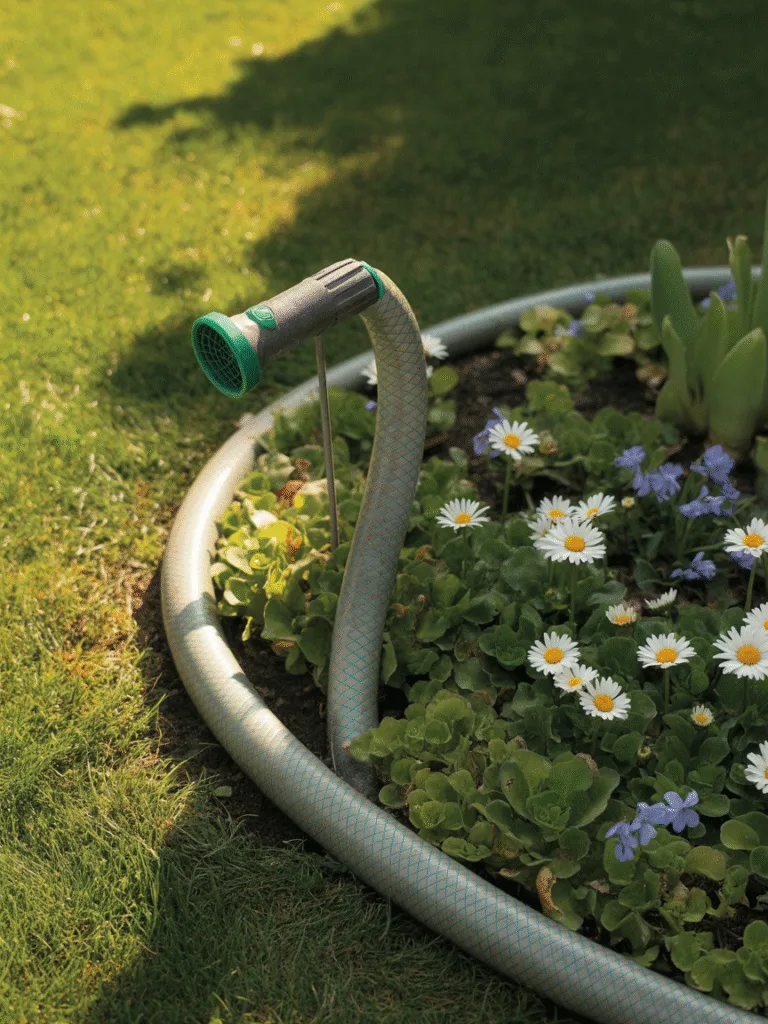
For quirky charm and extreme flexibility, try old garden hose or nautical rope as edging.
What Makes It Fun:
- Unexpected and creative
- Easy to mold into curves
- Works well for temporary layouts
Design Tips:
- Stake it into place with garden pins
- Paint the hose to match your decor
- Try braided rope for texture
Pro Tip: This is a fun one to use in kids’ garden spaces or whimsical zones.
17. Tile Mosaic Borders
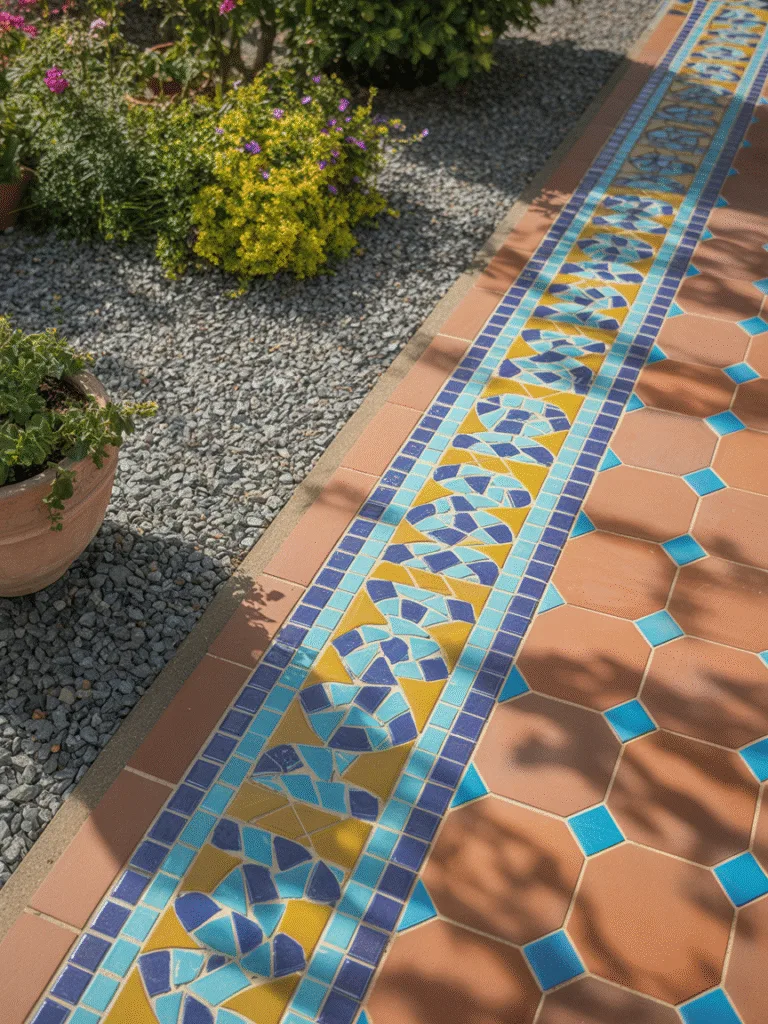
Add a pop of color and personal flair with tile mosaics as edging.
Why It’s a Vibe:
- Colorful, artsy, and custom
- Durable if sealed properly
- Great way to reuse broken tiles
Ideas to Try:
- Use mismatched tiles in a repeating pattern
- Create floral or geometric designs
- Pair with concrete or brick for support
DIY Tip: Grout well and seal to protect from weather.
18. Solar-Powered Light Borders
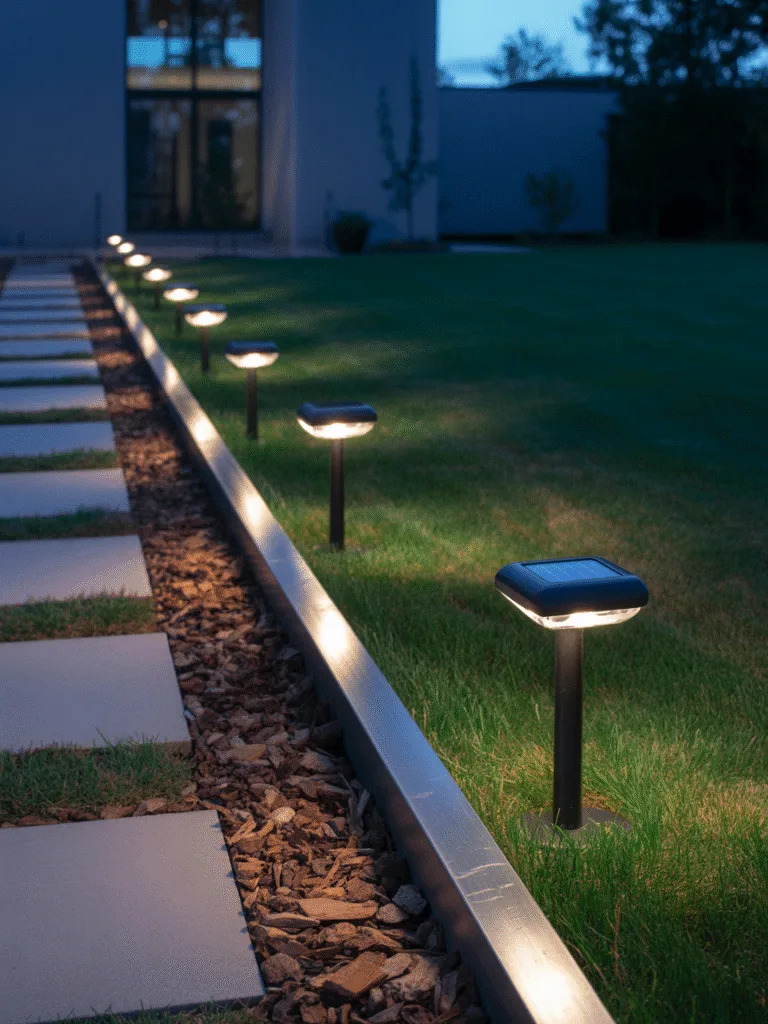
Functional and fancy, solar-powered garden lights double as an edging solution and pathway illuminator.
Why It Shines:
- Energy-efficient and automatic
- Enhances safety and visibility at night
- Adds ambiance without extra effort
Installation Tips:
- Space evenly along the lawn edge
- Combine with metal or stone for structure
- Look for waterproof, outdoor-grade lights
My Pick: Warm white lights give the coziest glow without being too harsh.
Common Mistakes to Avoid
Alright, before you grab a shovel and go border-crazy, here are a few things to watch out for:
- Skipping prep work — Always level your ground and clear roots or grass
- Going too shallow — Deep edging lasts longer and keeps grass out
- Mixing too many materials — Stick to one or two for cohesion
- Not considering maintenance — Some materials (like wood) need regular TLC
Take a minute to plan it out. Your future self will thank you.
FAQ
How deep should I dig for a lawn border?
Generally, 4–6 inches deep is a good starting point. If you’re using bricks, stone, or metal, that’s deep enough to stabilize and block roots.
What’s the easiest edging for beginners?
Plastic or rubber edging is hands-down the easiest. It’s flexible, forgiving, and doesn’t require a ton of tools.
How do I stop grass from creeping into flower beds?
Use deep edging and landscape fabric under mulch. Metal or concrete borders work best for stubborn grass.
Can I mix edging materials?
Sure, but keep it consistent. Maybe wood around the back and stone in the front. Just avoid mixing five different styles—that gets messy.
Do I need to hire a landscaper for this?
Nope! Most of these ideas are totally DIY-friendly. If you’re dealing with concrete or heavy stone, you might want help, but everything else? You got this.
Final Thoughts
There you have it, friend — 10 super-practical, fun, and stylish lawn border ideas you can start on this weekend. Whether you’re leaning rustic, modern, budget, or bougie, there’s something in here that’ll fit your vibe.
I always say, the best gardens aren’t just about the plants. They’re about the little details that tie everything together. And borders? They’re that subtle line between “meh” and “wow.”
So roll up your sleeves, grab some gloves, and start edging your way to your dream lawn!

